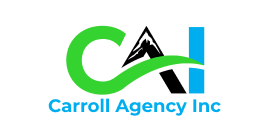Auto Insurance Coverage
Essential information and documentation needed for your vehicle. When it comes to securing auto insurance coverage, whether for your car, boat, RV, motorcycle, or any other vehicle, the process involves providing specific information and documentation to the insurance company. This ensures that you receive the appropriate coverage tailored to your needs. Below is a guide that outlines what you need to provide when starting insurance for different types of vehicles.
1. Car Insurance
Essential information and documentation car insurance is one of the most common types of auto insurance, and it’s essential to provide accurate information to get the right coverage. Here’s what you’ll need:
Personal Information
Driver’s License: You’ll need to provide your driver’s license number and possibly a copy of the license for all drivers to be included in the policy.
Personal Identification: This could include your Social Security number or any government-issued ID to verify your identity.
Address: Your current residential address is necessary as it affects your insurance rates.
Vehicle Information
Vehicle Identification Number (VIN): The VIN is a unique 17-character code that identifies your car. This number is essential for the insurer to assess your vehicle’s make, model, and history.
Title and Registration: A copy of your vehicle’s title and registration helps confirm ownership and ensure the vehicle is legally registered.
Mileage and Condition: You may need to provide the current mileage and general condition of your vehicle, especially if it’s a used car.
Driving History
Driving Record: Your driving history, including any accidents or traffic violations, will be reviewed by the insurance company to determine your risk level.
Previous Insurance: Information about your previous insurance coverage, including the name of the insurer and the duration of coverage, may be required.
Financial Information
Lienholder Information: If your car is financed or leased, you’ll need to provide details about the lienholder, as they may require specific coverage.
Payment Information: You’ll need to provide a method of payment, such as a bank account or credit card details, to set up your policy.
2. Boat Insurance
What You Need to Provide Insuring a boat involves similar but slightly different requirements compared to car insurance. Here’s what you’ll need:
Boat Details
Hull Identification Number (HIN): Like a VIN for cars, the HIN is a unique identifier for boats, necessary for the insurer to assess the boat’s details.
Title and Registration: Provide a copy of the boat’s title and registration to confirm ownership and legal status.
Make, Model, and Year: Information about the boat’s make, model, and manufacturing year is essential for determining the coverage and premium.
Engine Details: If your boat has an outboard motor, provide details such as the make, model, horsepower, and serial number.
Usage Information
Navigation Area: Insurers may ask where you intend to use the boat (inland lakes, coastal waters, etc.), as it impacts the type of coverage needed.
Boat Storage: Information on how and where the boat is stored (e.g., marina, dry dock, trailer) can affect the insurance premium.
Safety Features
Safety Equipment: Details about onboard safety equipment, such as life jackets, fire extinguishers, and navigation lights, may be required, as they can influence your insurance rates.
3. RV Insurance
Essential Information and Documentation: Recreational Vehicles (RVs) combine elements of both car and home insurance, making it important to provide comprehensive information:
Vehicle Information
Vehicle Identification Number (VIN): The VIN is necessary for the insurer to identify the RV’s specific details.
Title and Registration: Provide these documents to prove ownership and legal registration.
Make, Model, and Year: Detailed information about the RV, including the manufacturer, model, and year, helps determine the coverage required.
Condition and Mileage
The insurer may request details about the RV’s current condition, including any modifications and its mileage, as well as information on how it is used and stored.
Usage Details
How often and where you use the RV (full-time, part-time, vacation use) can affect the type of coverage you need.
Storage Information
Storage Information: Details on where and how the RV is stored when not in use (e.g., in a garage, at a campsite, on the driveway) can influence your premium.
Personal Belongings
Since RVs often contain personal belongings, you may need to provide an inventory of items inside the RV to determine the appropriate contents coverage.
4. Motorcycle Insurance
What You Need to Provide Insuring a motorcycle requires specific details to ensure adequate coverage:
Motorcycle Information
Vehicle Identification Number (VIN): This is necessary for the insurer to identify the motorcycle’s details.
Title and Registration
Provide proof of ownership and legal registration with these documents.
Make, Model, and Year
Information about the motorcycle’s make, model, and year is essential for determining coverage.
Engine Size: The size of the motorcycle’s engine, usually measured in cubic centimeters (cc), can influence the insurance premium.
Rider’s License
A motorcycle endorsement on your driver’s license is required and some insurers may request a copy.
Riding Experience: Information about your experience as a rider, including any completed safety courses, can affect your insurance rates.
Other Vehicles (ATVs, Harvester's, etc.)
Information Needed for other recreational vehicles such as ATVs (All-Terrain Vehicles) or Jet Skis, the information required is similar to that of cars and motorcycles.
Vehicle Information
Vehicle Identification Number (VIN): Required to identify the vehicle’s specifics.
Title and Registration
Proof of ownership and legal registration is necessary.
Make, Model, and Year
Information about the vehicle’s make, model, and year is crucial for determining coverage.
Usage Details
How often and where you use the vehicle can affect the type of coverage you need.
Storage Information
How and where the vehicle is stored when not in use can influence the insurance premium.


Conclusion
Securing auto insurance for your car, boat, RV, motorcycle, or any other vehicle is a critical step in protecting your investment and ensuring financial security in the event of an accident or damage. Providing accurate and detailed information, along with the necessary documentation, is essential for obtaining the right coverage at the best possible rates. Whether you’re insuring a car, a boat, or a motorcycle, understanding the requirements can help you navigate the process smoothly and secure the protection you need for your vehicles.





